Use new or leftover mashed potatoes to make this simple and flavorful 7-ingredient vegan potato flatbread with scallions. This no-yeast flatbread is dairy-free and gluten-free, but soft, flexible, and with minimal prep!
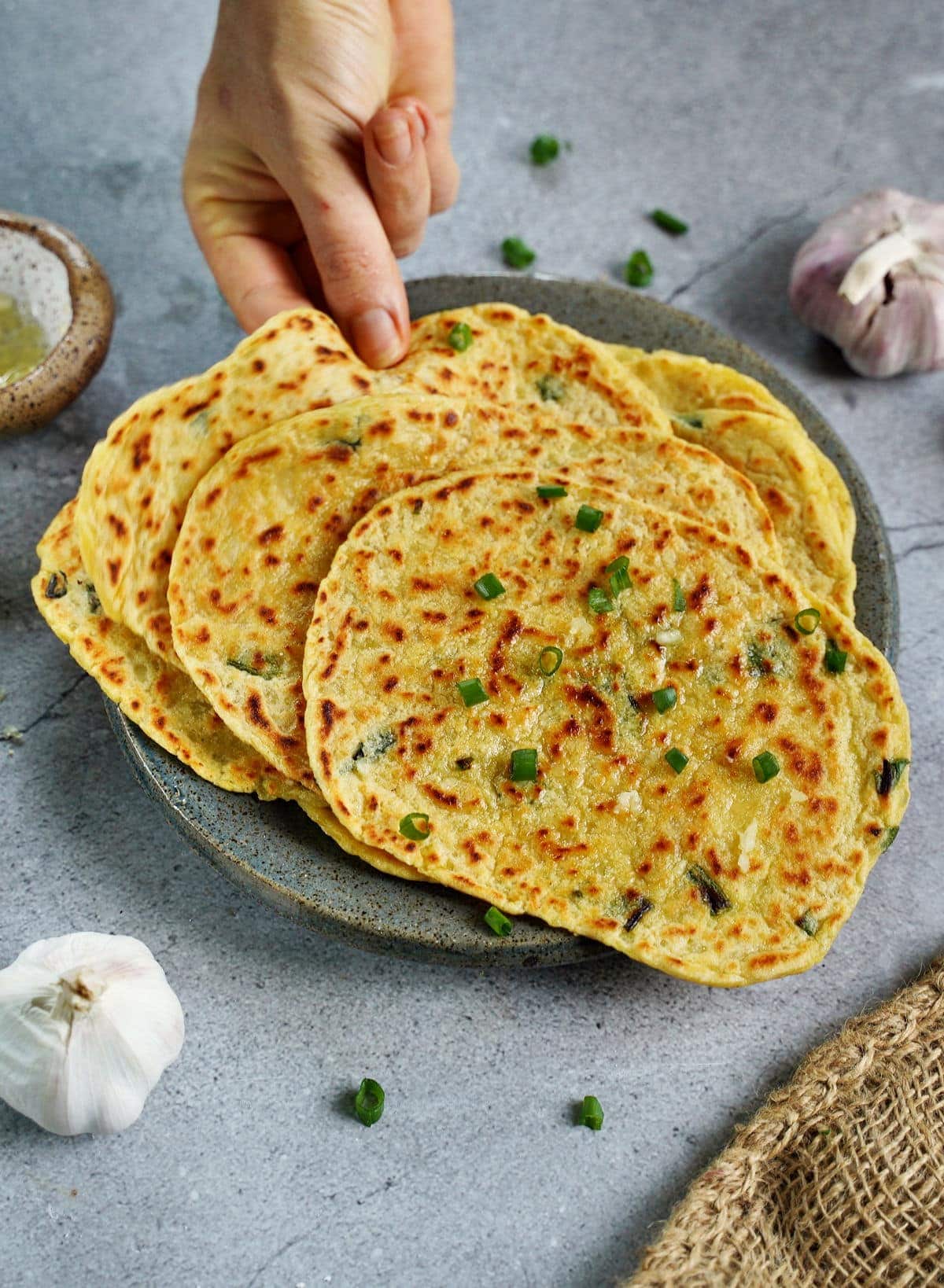
Fluffy and Flexible Gluten-Free Potato Flatbread
This potato flatbread recipe falls somewhere between Norwegian lefse and Scottish potato scones (tattie scones)/Irish potato farls, but with absolutely no dairy. Instead, this vegan flatbread requires just a handful of ingredients, including a base of new or leftover mashed potatoes (perfect for post-Thanksgiving/Christmas), and my special German add-in—nutmeg!
Potato flatbread – in pancake, scone, or potato cake form – is popular all over the world, and it’s not hard to see why. The result is a fluffy, tender, flexible gluten-free flatbread without yeast! Even better, as this recipe is yeast-free, meaning there are no complicated steps or resting/kneading. Instead, just cook the potatoes, mix the dough, roll out, and cook the no-yeast flatbread until golden brown.
It’s a low-fuss, high-reward dish made even heartier (and moreish) than other flatbread recipes like gluten-free naan or pita, thanks to the addition of mashed potato. Once cooked, enjoy the potato scones/flatbread slathered in vegan butter, to mop up sauce, use as a wrap, as part of a breakfast, or as a simple snack with savory toppings!
Looking for more interesting ways to use leftover mashed potatoes? You might enjoy these potato noodles, stuffed potato cakes, or gnocchi!
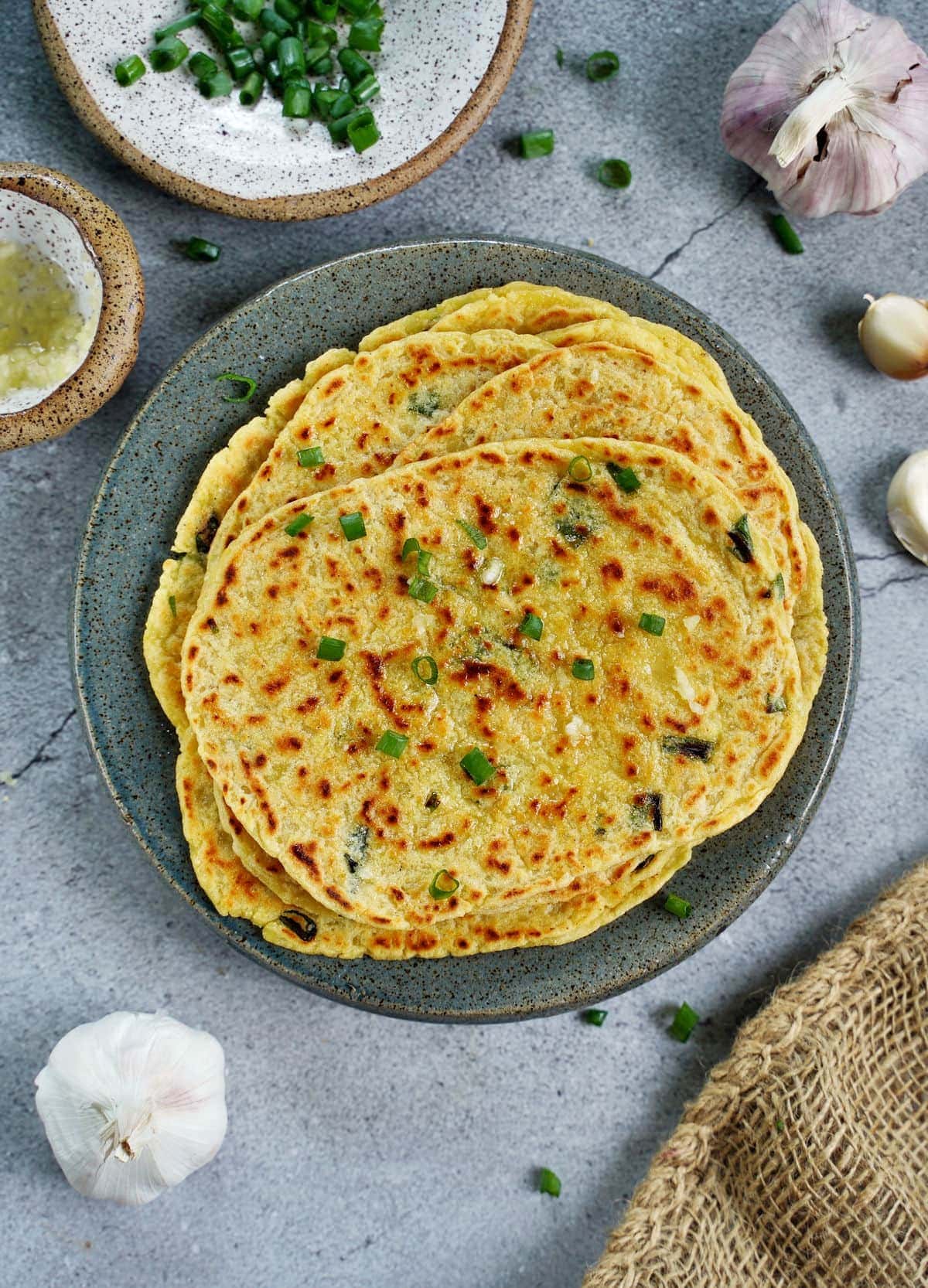
The Ingredients
- Potatoes: You’ll need starchy potatoes like Russet or Yukon Golds. OR use leftover mashed potatoes (as long as it doesn’t have tons of milk and vegan butter in it!)
- Flour: You can use regular all-purpose flour (but may need extra flour). I made my flatbread gluten-free, with a mix of chickpea flour and tapioca flour.
- Baking powder: This will provide the potato flatbread with a slightly lighter texture.
- Seasonings: Salt and nutmeg are all you require, to season this simple scallion flatbread.
- Oil: Use neutral cooking oil; olive oil, coconut oil, or avocado oil, etc.
- Scallions: While technically optional, chopped scallions pack in tons of flavor to the healthy flatbread (like they do for Korean Pajeon, too). If you want to enjoy this potato flatbread with sweet toppings, then omit this ingredient.
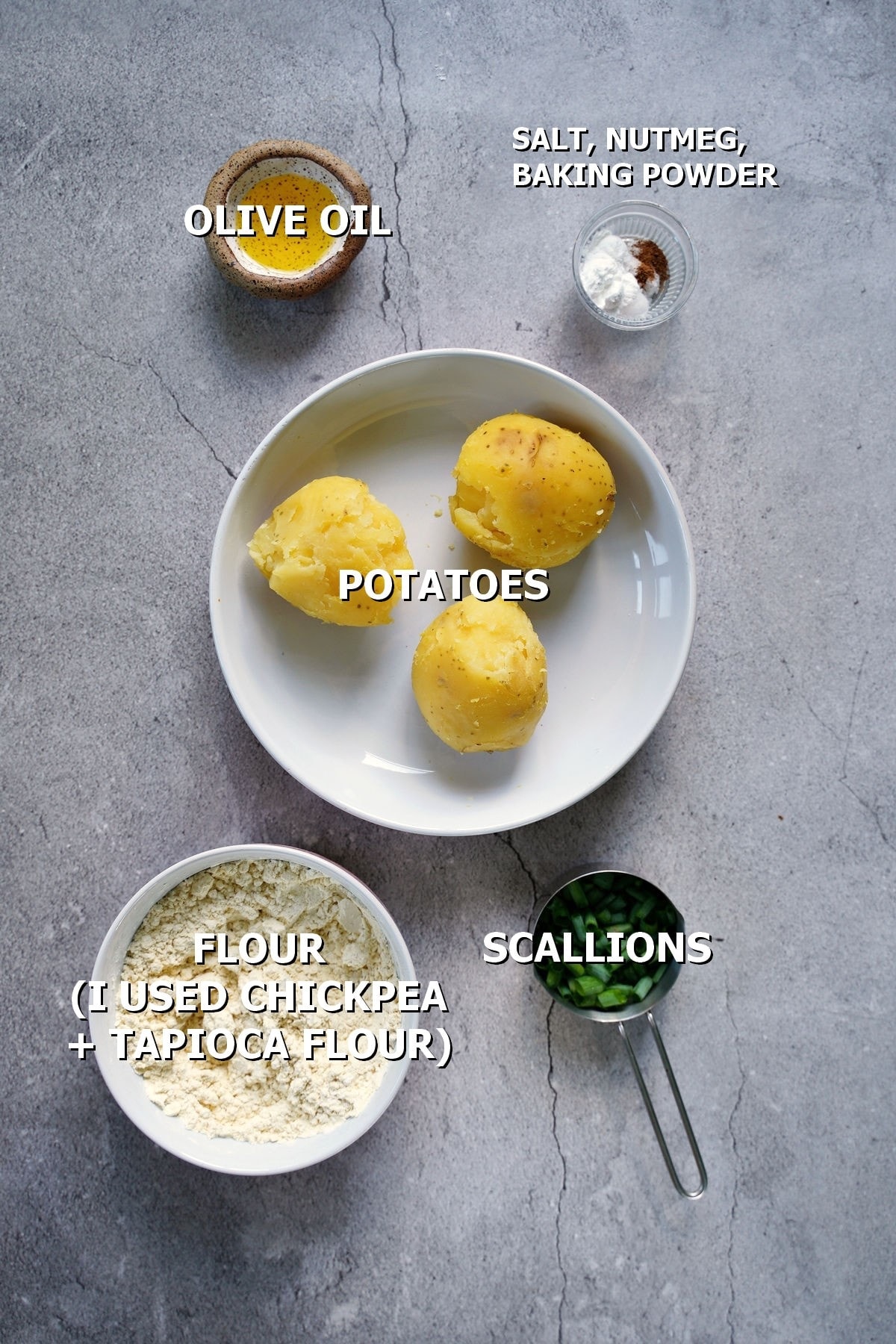
Optional add-ins and recipe variations:
- Garlic: You can optionally add 2-3 minced cloves to the mashed potato bread dough for a more flavorful garlic flatbread.
- Other herbs: Parsley, chives, dill, cilantro, or thyme would also work – chopped finely and added to the scallion flatbread potato dough.
- Spice: add a pinch of red pepper flakes or even a little cayenne pepper/chili pepper to the potato dough.
- Seeds: For extra protein and crunch, you can add a tablespoon (or so) of tiny seeds like chia, flax, or even “everything but the bagel” seasoning.
- Cheese: Using a dairy-free melty cheese like a ‘cheddar’ style cheese will add more flavor to the mashed potato pancakes/ flatbread. I recommend adding around ¼- 1/2 cup shredded vegan cheese. You could alternatively add some nutritional yeast for a subtle cheesy flavor.
- Sweet potato: This recipe should also work with mashed sweet potato. Though, the amount of flour needed will vary.
- Other seasonings: You can experiment—for example, onion powder, paprika, turmeric, cumin, Italian herbs, etc. Of course, Indian spices would also work well.
Please read the recipe card below for the full ingredients list, measurements, complete recipe method, and nutritional information.
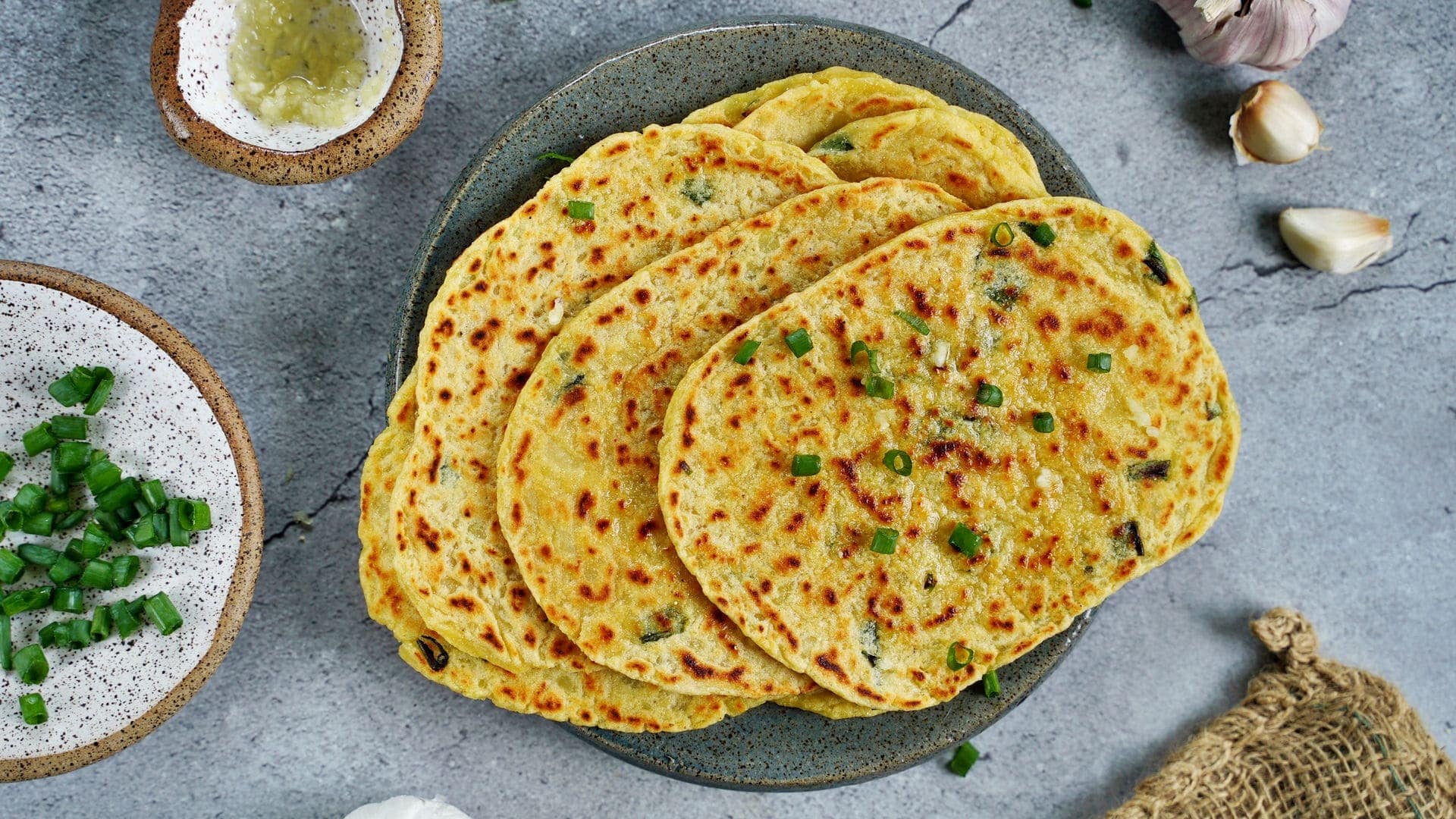
How to Make No-Yeast Potato Flatbread?
Step 1: Prepare the potato dough
- First, boil the whole potatoes in lightly salted water until fork-tender. Then, drain the water, allow them to cool until you’re able to handle them. Then peel the skin and mash them with either a potato ricer or potato masher until smooth (or close-to smooth).
It’s best to do this as soon as the potatoes are cool enough to handle, as the warmth of the potato mixed with the remaining ingredients will yield softer flatbread. You need 400g of potatoes (weight after cooking and peeling the potatoes).
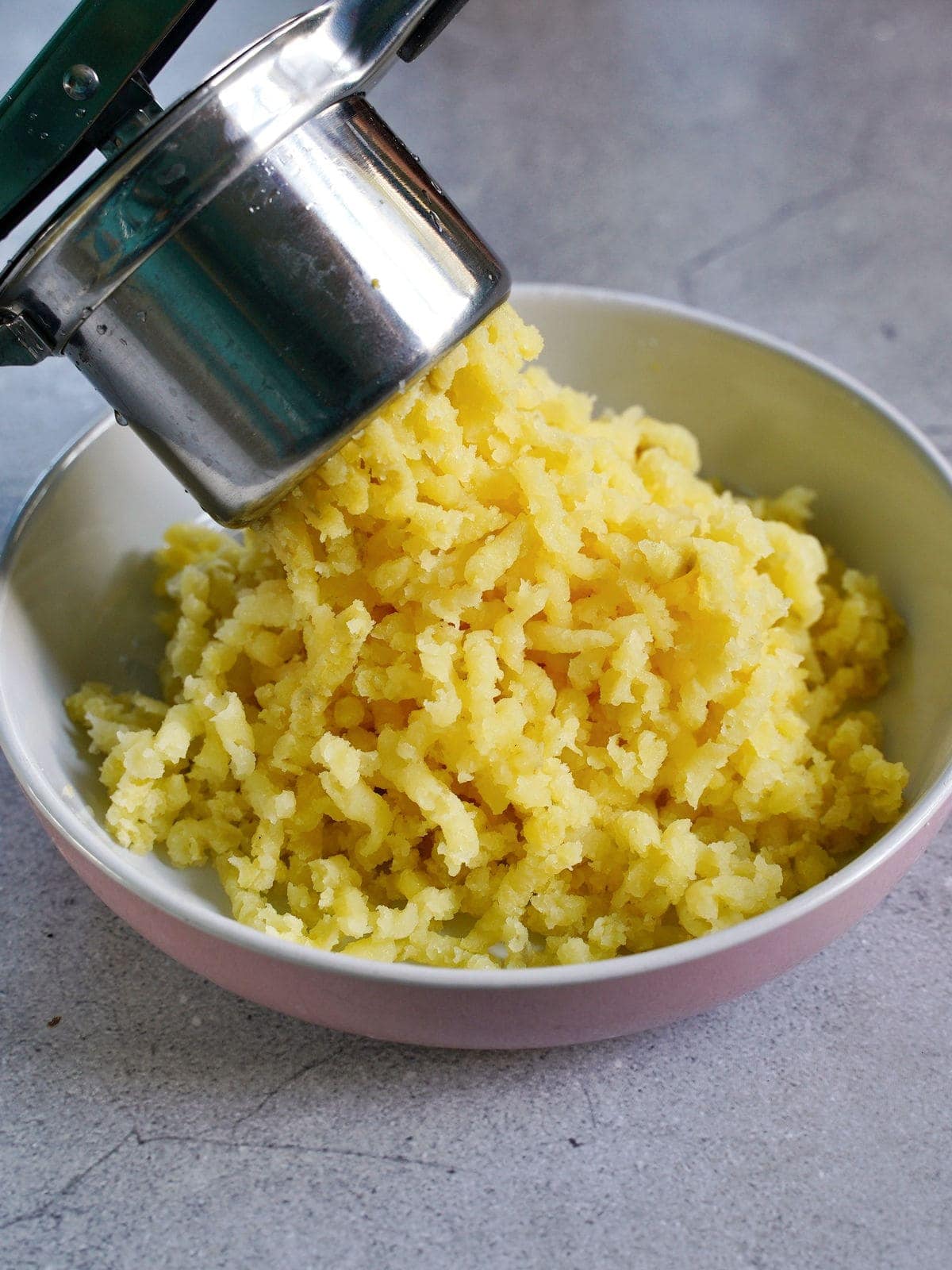
- Then, add the flour, baking powder, salt, nutmeg, and chopped scallions to the potato and mix with a spoon to begin—finishing with your hands to knead the mixture into a dough.
The aim is to incrementally add enough flour until the potato dough is no longer sticky. The amount can vary from batch to batch based on how ‘wet’ the potatoes are.
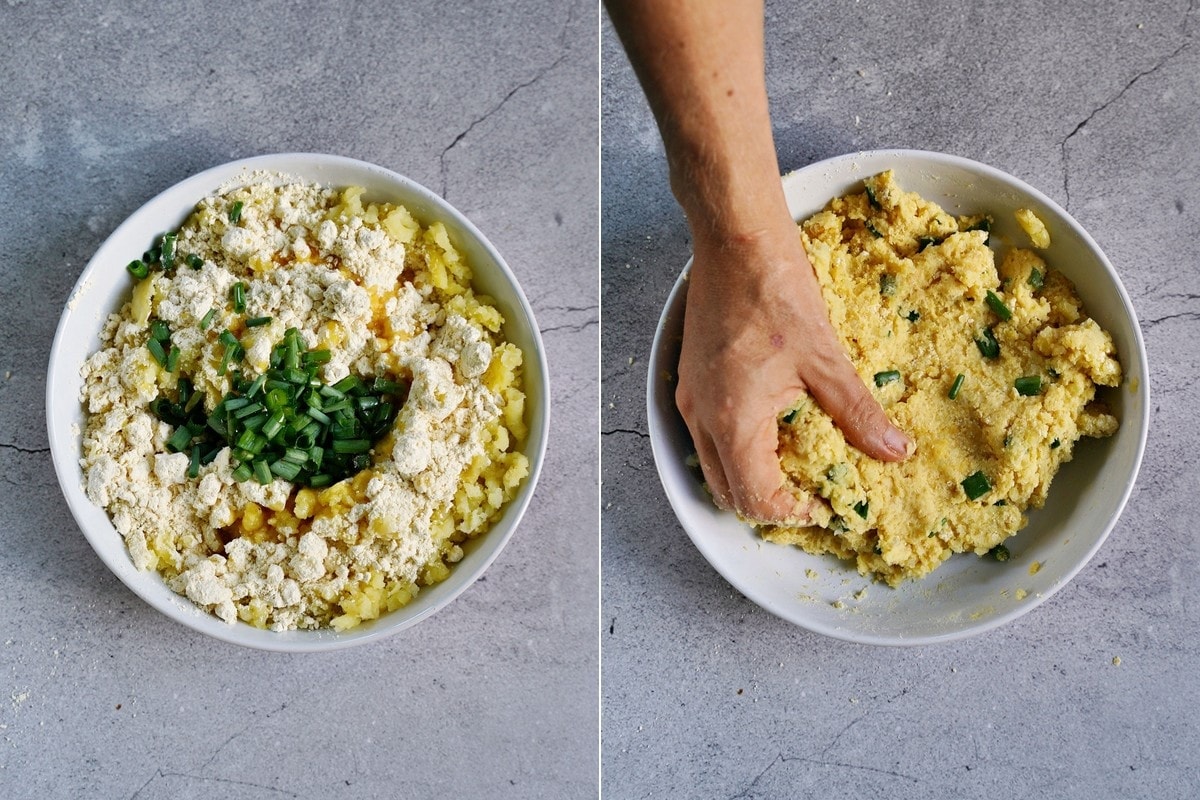
- Next, divide the dough into 6-8 portions and roll each one into a ball. Eight portions will make smaller, thinner potato flatbreads. Whereas six will create slightly larger, thicker ones.
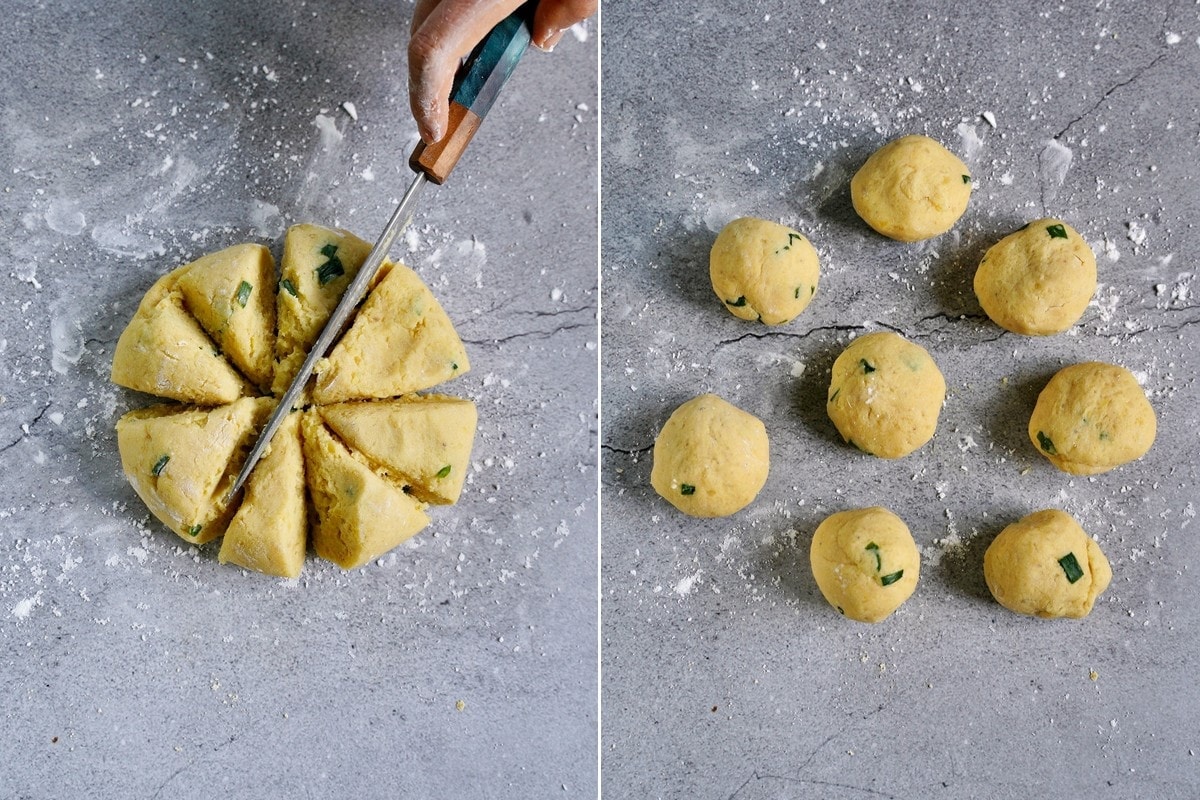
- Using a rolling pin, roll each ball out between two sheets of lightly oiled wax paper (or parchment paper) into a disk between 1/8-1/4 inch thick. For me, the diameter was about 5 1/2-6 inches per flatbread (refer to the video for visual reference).
To cut them like Scottish/ Irish potato scones/ potato farls, once rolled out into a circle shape, then cut into triangles and use a fork to prod all over the surface.
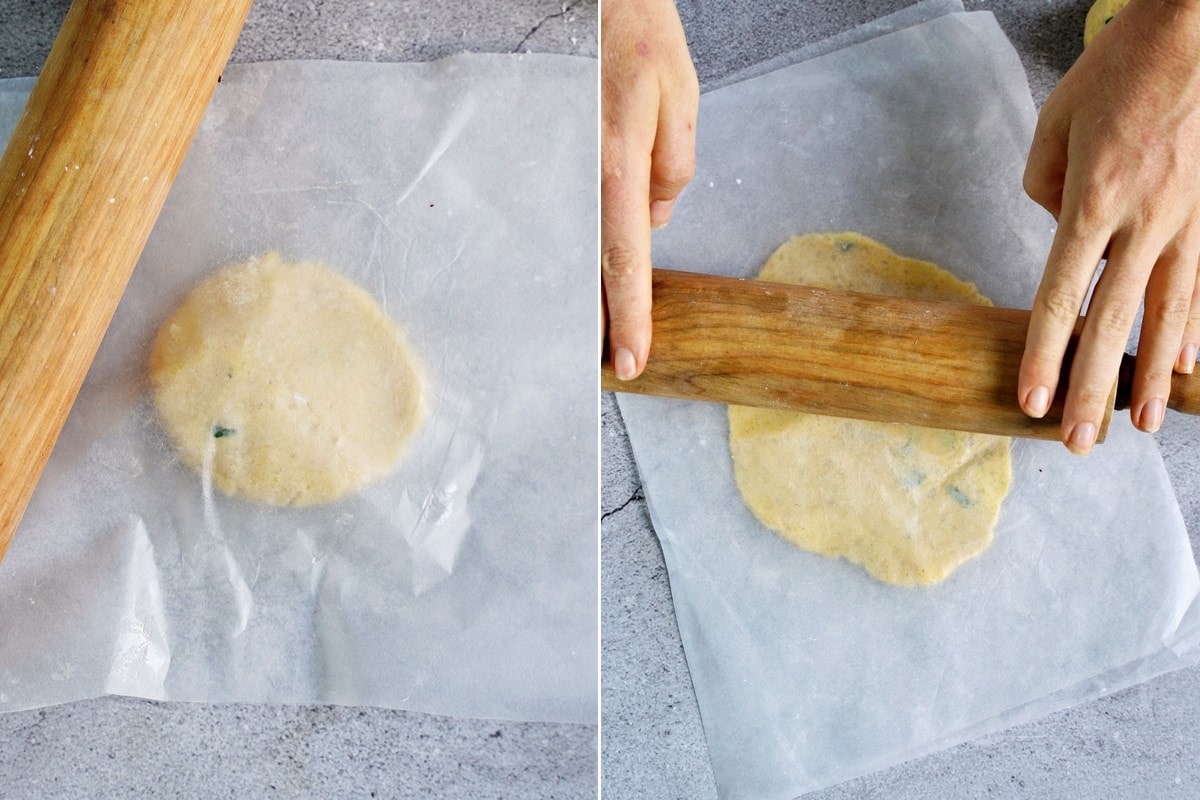
Step 2: Cook the skillet flatbread
- Lightly oil a large non-stick frying pan/skillet over medium heat. Once ready, remove the top layer of wax paper from the first potato flatbread and flip it over onto the pan, peeling away the remaining layer of wax paper.
This is the easiest way to transport the soft gluten-free flatbread without it tearing/stretching, etc.
- Cook the mashed potato pancakes/flatbread over medium heat for between 2-4 minutes, then flip and cook for a further 1-2 minutes. They should be golden brown and lightly crisp (but not too much to stop them from being flexible).
- Transfer the cooked flatbread to a plate and cover with a clean, damp kitchen towel (or foil). Then repeat the process with the remaining dough. I like to roll out the next dough ball each time while one cooks (re-using the same two pieces of wax paper for all the pieces).
- Finally, brush each vegan flatbread with a bit of garlic oil (optional), sprinkle with fresh herbs, and enjoy!
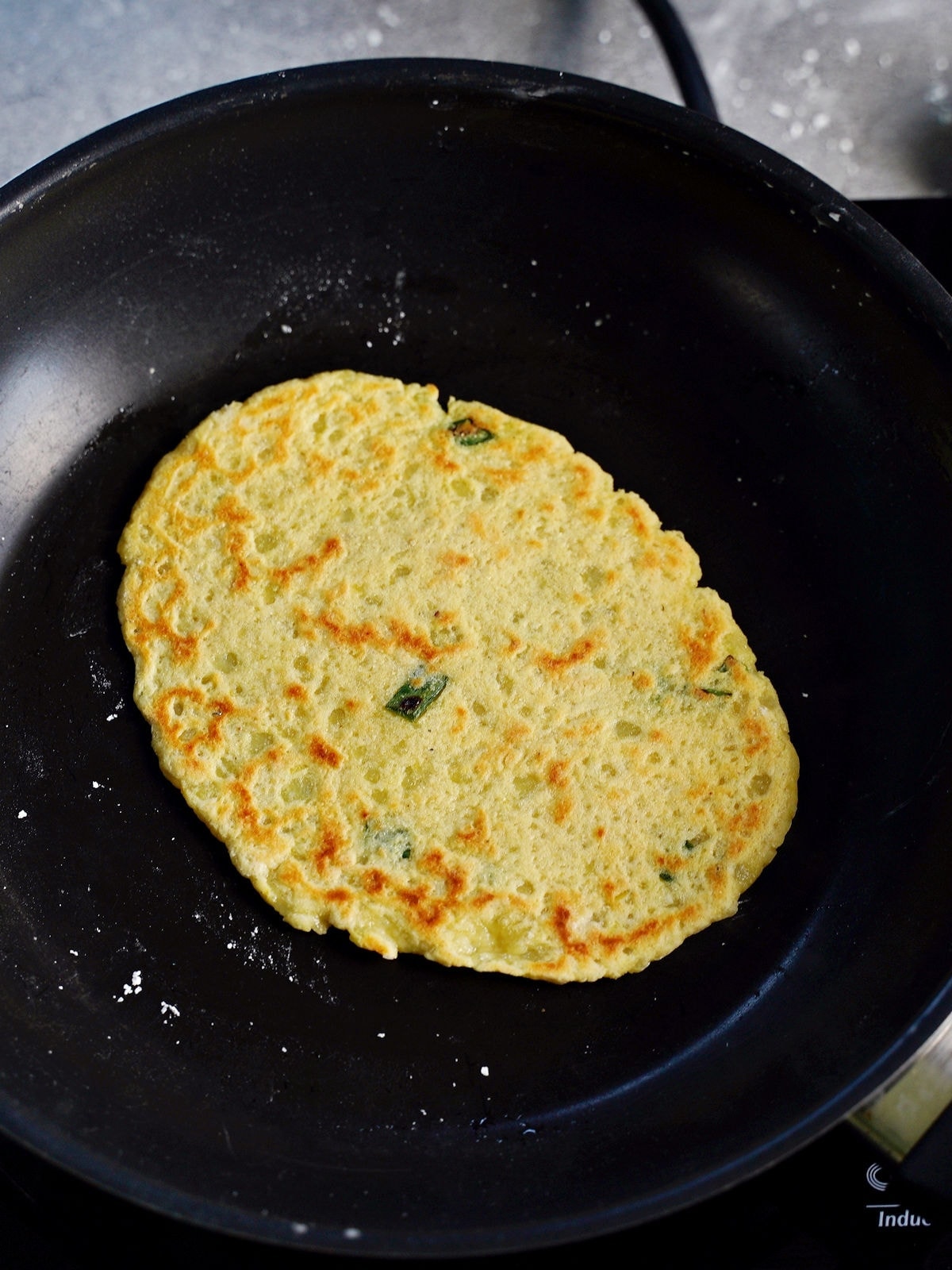
How to serve?
You can enjoy these vegan potato flatbreads in many ways, including:
- Topped with a little melted vegan butter and herbs
- To mop up the sauce in dishes like curry, stews, gravy, etc.
- Use for dipping into dips like hummus, baba ghanoush, tzatziki, etc.
- Use as a flatbread wrap/ ‘sandwich’
- Turn into a potato flatbread ‘pizza’ by topping with marinara and a little vegan cheese (and your toppings of choice), then broiling
- Enjoy like leftover mashed potato pancakes–topping with vegan sour cream and scallions or smashed avocado, etc.
- Sprinkle with cinnamon sugar
- Add to a brunch table alongside fruits, pancakes, yogurt, granola, etc.
- Top with sweet spreads like jellies/jams, nut/seed butter, or homemade vegan Nutella
- Enjoy as part of a vegan ‘Full English’ breakfast with scrambled tofu, tomatoes, beans, vegan sausages, etc.
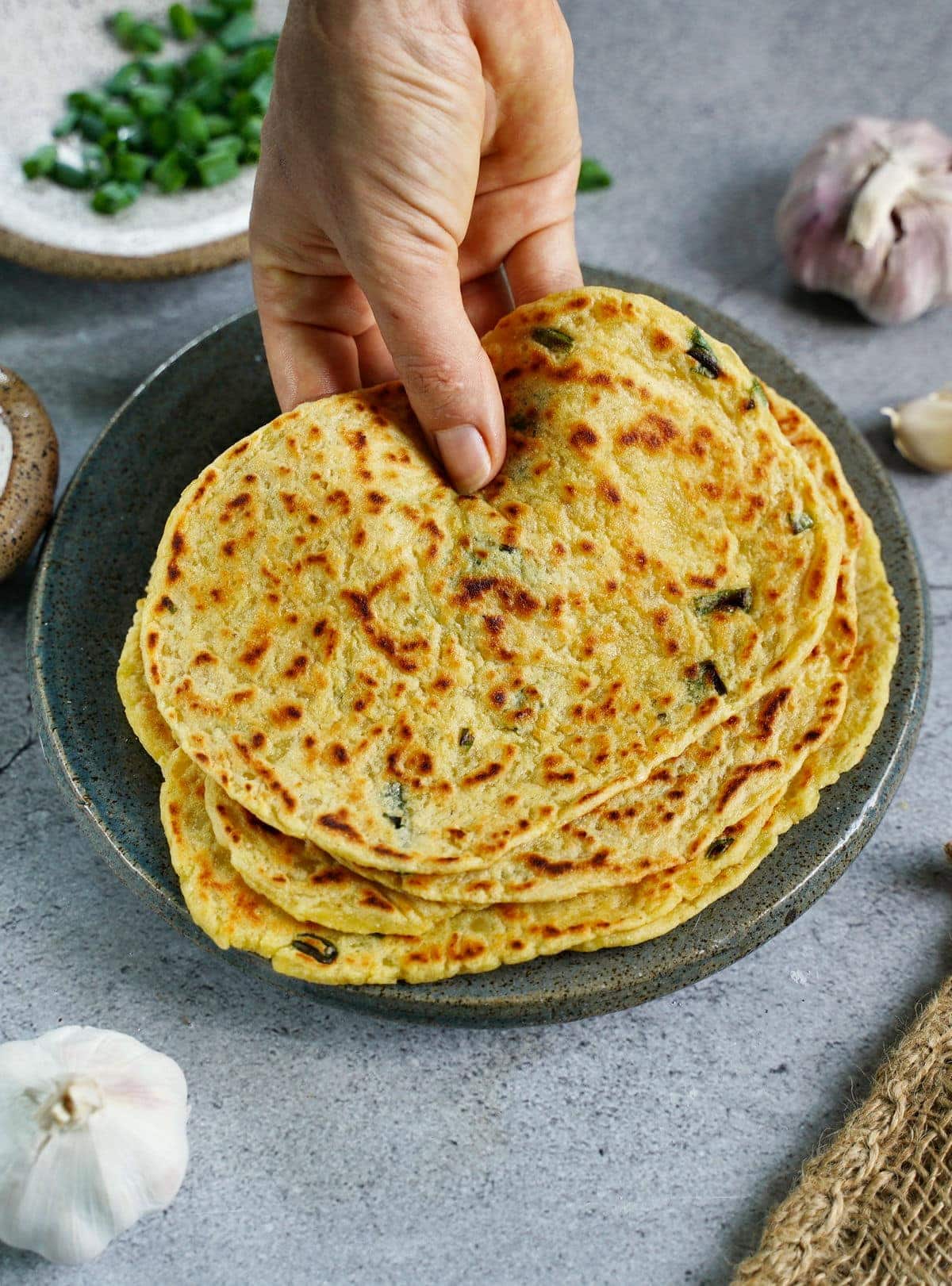
How to Make Ahead and Store
Make-ahead: prepare the mashed potato mixture 1-2 days in advance. Or use leftover mashed potatoes (as long as it isn’t completely packed with butter and dairy-free milk- a little is fine). Store the potato mash, covered, in the refrigerator. You may also be able to freeze the uncooked dairy-free flatbread, though I’ve never tried.
Store: The mashed potato bread tastes amazing when warm right after cooking. However, store the leftover flatbread in an airtight container at room temperature for 1-2 days or in the refrigerator for 4-5 days.
Freeze: Make a stack of the vegan flatbread with pieces of parchment paper in-between (so they don’t stick) and freeze wrapped in a layer of plastic wrap, then placed inside a Ziplock bag. Freeze for up to three months. Thaw in the fridge overnight and enjoy at room temperature or reheated.
Reheat: Lightly reheat the flatbread either on the stovetop or in a toaster (for a crisp outer layer) OR in the microwave (softer texture, but tastes lovely when slathered with vegan butter).
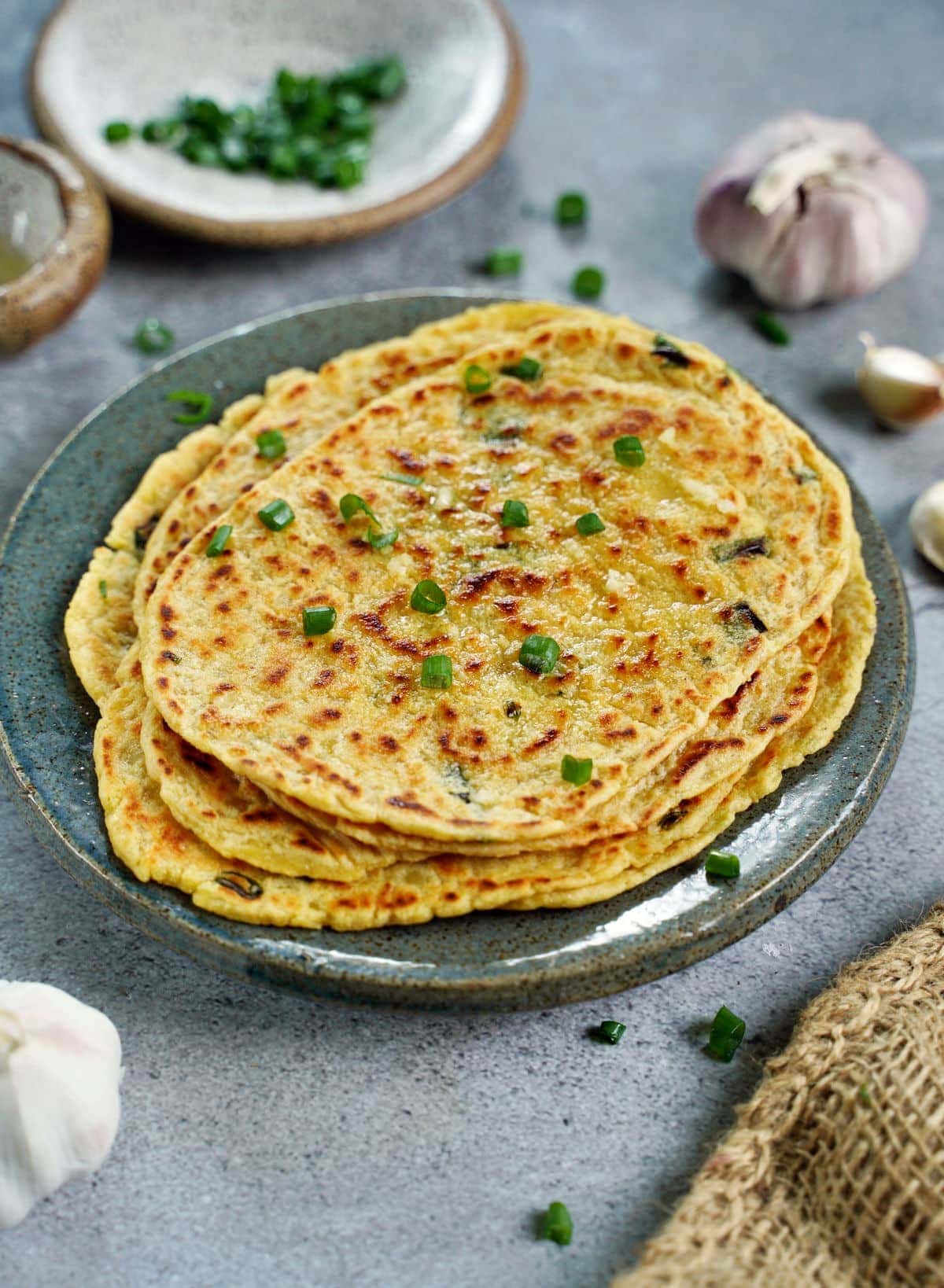
Recipe Notes and FAQs
- Can I peel the potatoes before boiling? I don’t recommend doing so, as the potatoes will soak up more water and require more flour (which can affect the dough and lead to ‘stodgy’ potato flatbread).
- Adjust the amount of flour to touch: The dough should be soft but not too sticky and definitely not ‘dry.’ Add the flour incrementally until you achieve the best consistency. The amount used can vary between batches.
- Other cooked potatoes: You could use baked potatoes. Prod them a few times with a knife and then bake at 400F/200C until fork tender (45-60 minutes).
- The thickness of the potato flatbread: I like to make this healthy flatbread between 1/8-1/4 inch thick. However, you could experiment with rolling them out thinner, like a slightly thicker tortilla for wraps.
- If you use leftover mashed potato: If it’s already seasoned, adjust the seasoning in this recipe accordingly. You may also require a little additional flour.
- Don’t overwork the dough: The less it’s handled, the softer the gluten-free flatbread.
- Don’t overcook the flatbread: It can cause them to dry out or become too stiff (not supple/flexible, as they should be).
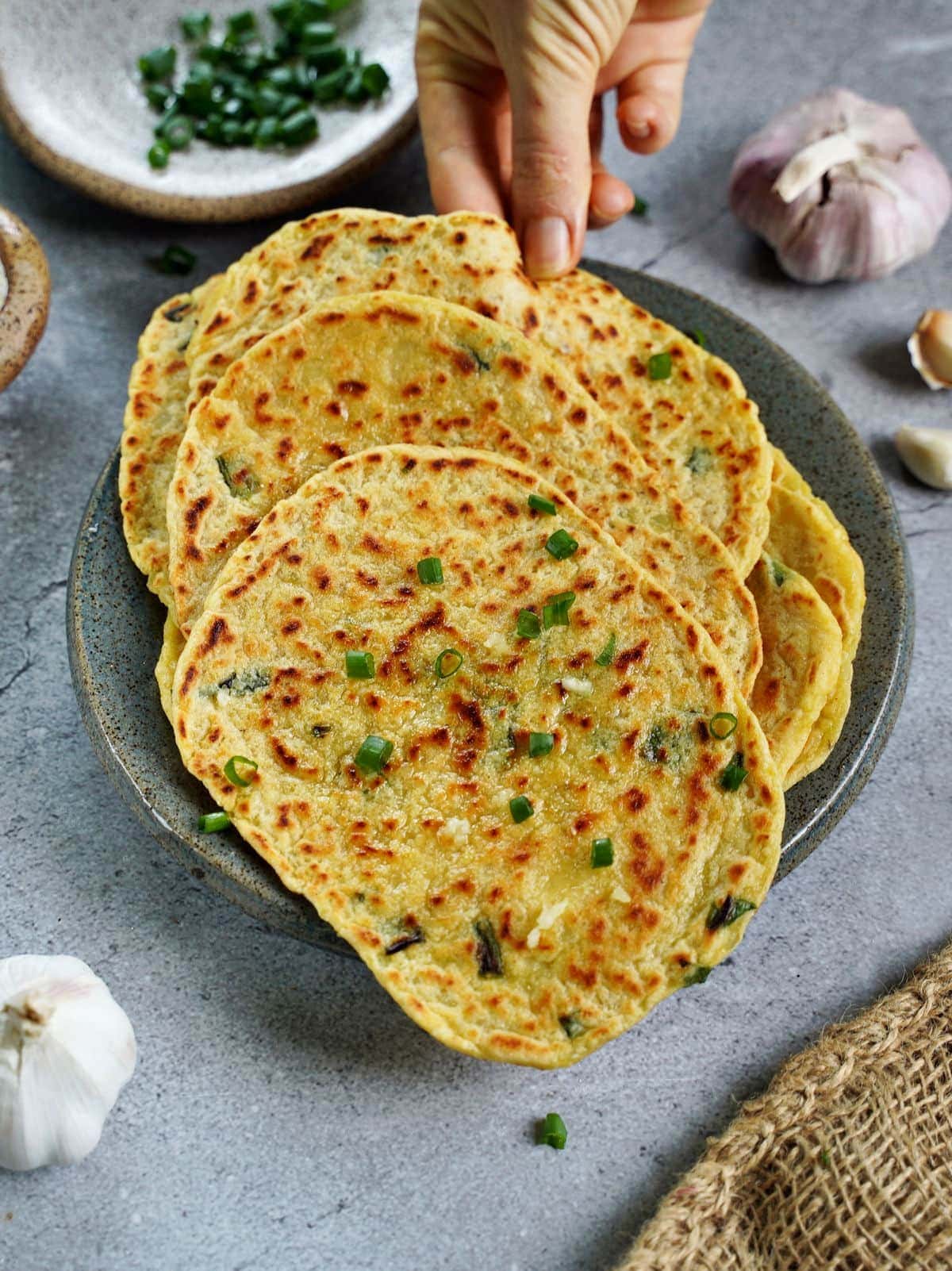
Other Vegan Potato Recipes
- Hasselback Potatoes
- German Potato Soup
- German Potato Dumplings
- Easy Potato Curry
- Vegan Hash Browns
- Vegan Scalloped Potatoes
If you try this vegan potato flatbread recipe, I’d love a comment and ★★★★★ recipe rating below. Also, please don’t forget to tag me in re-creations on Instagram or Facebook with @elavegan and #elavegan—I love seeing them.

Potato Flatbread
Ingredients
- 3 medium-large (400 g) potatoes (see instructions)
- 1 cup (120 g) flour + more to knead (see notes)
- 1 tsp baking powder
- 1/2-3/4 tsp salt
- 1 Pinch of nutmeg
- 1 tbsp (13 g) oil + more to fry
- 1/3 cup scallions chopped
Instructions
- You can watch the video in the post for visual instructions.Boil potatoes in salted water until they are fork-tender, then drain the water, let the potatoes cool and peel them. They should weigh 400 grams (14 oz) after cooking and peeling. Mash them in a bowl with a potato masher or use a potato ricer.
- Add the flour, baking powder, salt, nutmeg, oil, and scallions. Mix with a spoon first, then use your hands to knead the dough. You will have to add more flour until the dough isn't sticky anymore.
- Divide the dough into 6-8 parts and roll them into balls. Make 8, for smaller, thinner flat breads and 6 for slightly larger/thicker ones.
- With a rolling pin, roll out each ball between 2 sheets of oiled wax paper (or parchment paper) into a disc, between 1/8-inch and 1/4-inch thick. The diameter was about 5 ½ - 6 inches. Check the video for reference.
- Lightly oil a large non-stick frying pan/skillet over medium heat. Once ready, remove the top layer of wax paper from the first potato flatbread and flip it over onto the pan, peeling away the remaining layer of wax paper.
- Cook the flatbread over medium heat for about 2-4 minutes, then flip it over and cook for a further 1-2 minutes. Place the cooked flatbread on a plate and cover it with a kitchen towel. While one flatbread cooks, you can roll out the next dough ball and repeat the process.
- Brush them with a little garlic oil, sprinkle with more fresh herbs and enjoy!
Notes
- I made the recipe gluten-free, by using 80 grams of chickpea flour and 40 grams of tapioca flour. You can use regular all-purpose flour, if you aren't gluten-free, however, you might need to add more flour if the dough is too sticky.
- It's important that you cook the potatoes with the peel so that they are drier. You can also cook them a day ahead or use leftover mashed potatoes for a quick flatbread!
- You can add 2-3 cloves of pressed garlic to the dough, for a flavorful garlic flatbread recipe.
Nutrition information is an estimate and has been calculated automatically
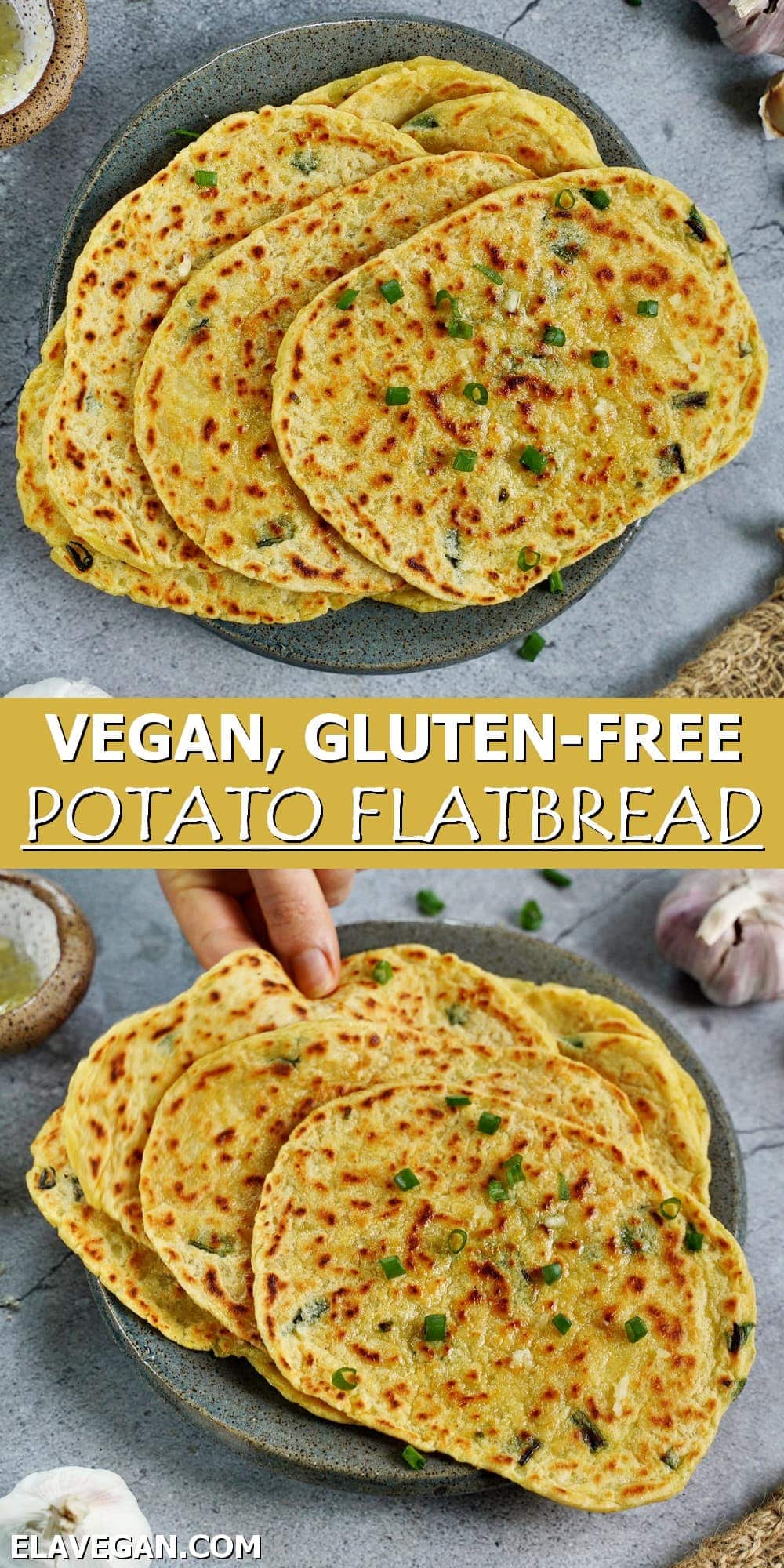

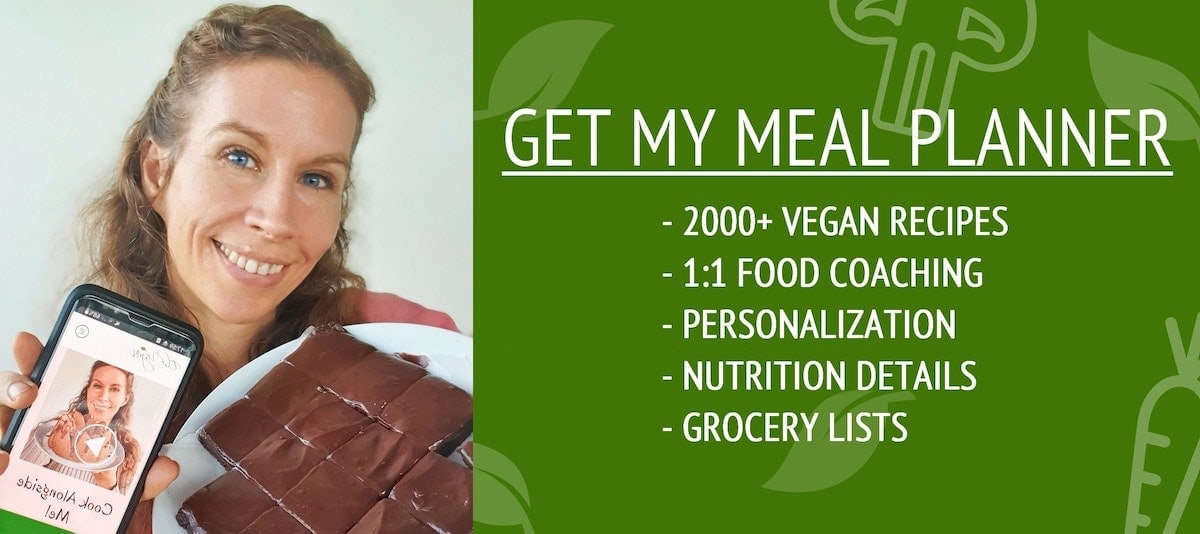
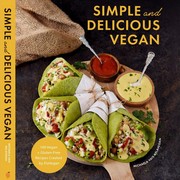
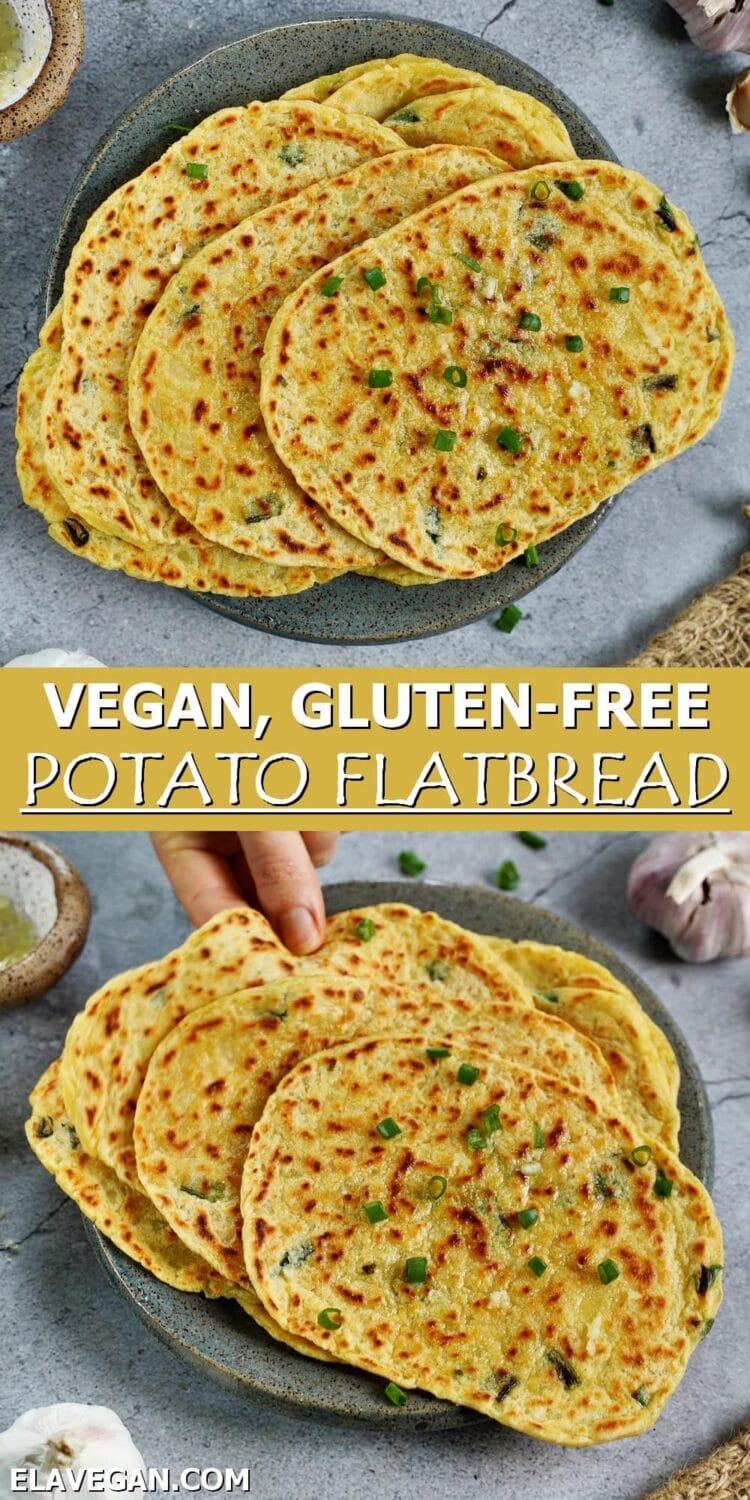
Can I use oat flour for this?
Hi Jess, I don’t think it will work well.
Can this be made with whole wheat flour
That should be fine!
Hello Ela,
I have a question regarding the flour mixture. Did you use 2/3 cups of chickpea flour and 1/3 tapioca? The recipes says 1 cup flour.
Hey Maria, I always weigh flours in grams, which is much more accurate. So, I used 80 grams of chickpea flour and 40 grams of tapioca. It should be more or less 2/3 cup and 1/3 cup, but not super accurate.
Thank you!
Could you cook in a pizza oven (temp 732°F)
I am really not sure, Bob, as I never tried it. Please report back if you do. 🙂
Can I use almond flour and sweet potatoes instead and how much of each?
Hi Carmen, no, almond flour won’t work in this recipe. However, I have a recipe for almond flour tortillas.
These are literally one of the most delicious things I’ve ever made… thank you!!! I’ve been gluten free for 4 years & missed naan, pitas, bread soooo bad. You are a kitchen magician!!! I made these & added garlic & onion powder. I liked them fresh from the pan, but fell in love when I cut them into squares & threw them in the air fryer. My new favourite food. One question. Sometimes I try to avoid beans/legumes… would these still work if I only used tapioca flour? Thanks so much ♡
Hi Charlotte, so glad you like the recipe. No, it won’t work with just tapioca flour, but you could try using cassava flour (I haven’t tried it myself, though).
Would I be able to freeze and reheat them? Or maybe store them between baking paper in the freeze them, and fry after I have defrosted them?
Yes, that’s fine. I describe the method in the post (in the section “How To Make And Store”). 🙂
Is it possible to use potato starch instead of potatoes?
Hi Kathy, that won’t work, as the mixture would end up too dry.
Any suggestions to sub baking powder?
Hi Sara, you could use 1/4 tsp baking soda and 1 tsp lemon juice, or just leave it out. 🙂
My “dough” is crumbling. What might I be doing wrong?
Hi Jennifer, what kind of potatoes did you use and which flour? Maybe your potatoes were very starchy, and therefore, the dough is crumbling. Did you mash the potatoes after cooking (still warm), or did you possibly wait until they were cold? This can all make a huge difference. I used Yukon Gold potatoes, mashed them when they were still warm, and used the flour mixture described in the recipe notes (chickpea flour + tapioca).
Hi Ela
I think what you do is great, you find all the things that are difficult to make gf and you make it simple! I am allergic to chickpeas, can you suggest another flour replacement?
Thank you!
Alex
Hi Alex, thanks for your compliment. I think rice flour might work too! 🙂
Hi,
I used GF oatflour and it worked!
Sounds great!
Yum, just made a batch and they are wonderful.
Next time I will try chickpea flour, I used wheat flour and chives this time.
Thank you.
So happy you loved it. Thanks for sharing, Tammie! 🙂
I have a huge bag of Bob’s Red Mill Instant Mashed Potatoes that I purchased for the yolk in vegan fried (tofu) eggs. Could I use this in place of the potatoes? How much mashed potato does this recipe yield?
Thanks!
Hi Emily, I am really not sure about this. I am afraid the texture might be off. It makes about 1 2/3 cup of mashed potatoes. 🙂
80 grams & 40 grams = how much in cups? This is for the chickpea & tapioca flour.
Thank you ????
Hi Rose, 80 grams of chickpea flour is 3/4 cup (slightly heaped). And 40 grams of tapioca flour is 1/3 cup. 🙂
This was absolutely delicious! I skipped the garlic oil at the end and had to (force) stop myself after two of these. Can’t wait for lunch tomorrow! Spread a cashew red pepper spread on them. Deeelicious!
That’s awesome, Angela! Happy you love them. 🙂
Hi Ela,
Is it possible to use sweet potatoes instead of potatoes?
I love your rescepis! Thanks for Charing them!
Hi Agnita, yes, but then you will need to use more flour since sweet potatoes aren’t as starchy. 🙂
Thanks!????????????♀️
You’re welcome. 🙂
Amei quero fazer essa receita!
🙂
Silvana said she loved making this recipe. Translated from Portuguese.
Thank you, Siena! 🙂
Hi Ela,
These were delicious! I made them with the scallions and served them with sour cream and applesauce.
So happy you liked them, Helen! 🙂
Hi Ela . I love all your recipes . Thank you . I never want to use flour because I’m so against wheat of any kind. I like to use chickpea flour mostly so I’m happy to see you’ve mentioned chickpea flour and tapioca.
Hi Jenny, yes, that’s what I used (I basically never use regular flour), that’s why 99% of all my recipes are gluten-free. 🙂
Hi Ela,
Your recipes never disappoint. I’m absolutely blown away by this one. The flatbread tastes incredible! Love both the flavour and the texture, the scallions are definitely a must!
That’s wonderful, Ven! I am so glad it turned out amazing. Thanks for your feedback. 🙂